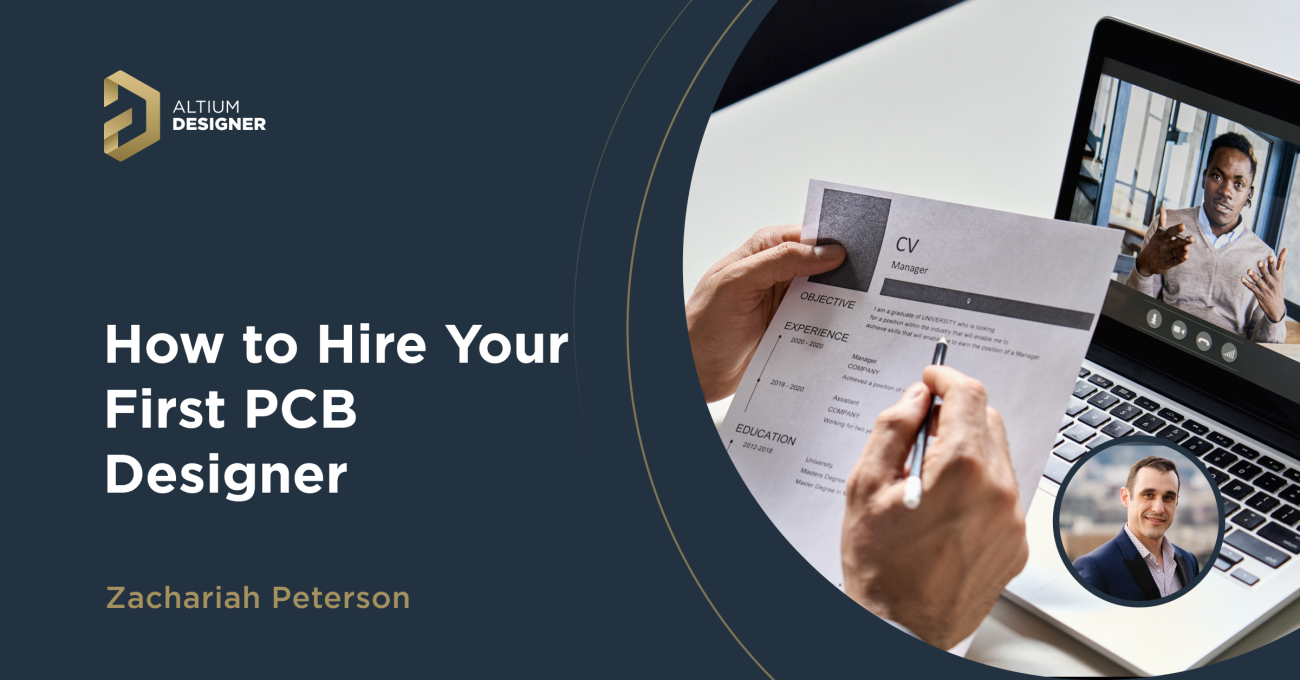How to Hire the Right PCB Designer for Your Project in 2023

Let’s set the scene: you’ve gone out of your way to attract engineering talent to apply at your company; you’ve created job postings, scoured LinkedIn, poached people from freelancing sites, and even worked with a recruiter. Now that you have a pool of decent candidates, how do you narrow down to the right PCB designer for your project?
Personally, in all the hiring decisions I’ve had to make, I often think back to how others have interviewed me, and what eventually led to a successful project. So in this article, I’ll outline my approach to hiring a PCB designer to work on a new product. Whether you’re a large company or a startup, take a look at these tips so you can come up with a hiring and interview strategy for a new PCB designer.
What To Expect When Hiring a PCB Designer
1. Contractor, Employee, or Design Firm?
Many PCB designers have had long careers working for large companies on a huge range of designs, but they don’t always do this as full-time employees. In addition, not all companies need full-time on-staff PCB designers, but they do need an engaged person for a set amount of time to get through project work. In other instances, the design work is periodic and on an as-needed basis, but is mixed with front-end engineering and lab work.
Think about what type of candidate you are looking for and how they will work with you. They could be internal employees, or external service providers, depending on the design cadence, time commitment, and task requirements.
- How long will each project last?
- Is the designer maintaining multiple products?
- Is the designer also performing front-end engineering work?
- Will the designer also need to coordinate or manage sourcing/manufacturing?
- Is on-site work in a lab or testing facility needed?
In some cases, it’s best to make an arrangement with a contractor or have a standing rate agreement with a design firm rather than hiring a full-time employee. Location of performance also matters: contractors and design firms tend to operate remotely, but bringing someone into a facility generally demands a full-time employee.
2. Specialization Area
Past working experience matters, but what’s more crucial is the specific design scopes that the candidate was involved in. In large multinational companies, design engineers may spend years working on a particular submodule of hardware. At smaller companies or as an entrepreneur, a designer could be working on a multitude of different projects, and their experience might be much broader but less specialized.
Make sure you can get a sense for their experience in the areas where you operate directly, as well as the tangentially related technical areas that will affect your project. For example, if you are building a complex digital board, they need to know a lot more than just differential pair routing. They need to know SI/PI/EMI, your specific interfaces, and how to construct a power distribution scheme on the board. They also need to know about board materials and stackups; they shouldn’t just leave it to a fab vendor.

3. Understanding of the Design Process
A professional designer that has progressed beyond Fiverr status should have a deep understanding of the design process beyond just schematic capture and PCB layout. The design process for advanced systems can be much more detailed, especially if the designer must take the lead on product development in any of these areas:
- Front-end circuit design and engineering
- Relevant standards identification and knowledge
- How to prepare a product specification
- Materials selection and balancing DFM needs with PCB performance
- Design of harnesses, enclosures, or connectors
- Understanding of the back-and-forth interaction in ECAD/MCAD collaboration
- Firmware/software development processes
Today’s design teams are firmly multidisciplinary, which means your PCB designer may need to provide input or leadership in any of the above areas.
4. Understanding of the Manufacturing Process
These days, where DFM/DFA rules the day for advanced products, designers have know as much as possible about the PCB manufacturing process. Startups that are developing cutting-edge products generally intend to produce at high-volume, so the PCB designer you select should understand the nuances of the manufacturing process, as well as how to manage production and logistics to ensure scheduling/cost targets are met.
Working within the modern electronics supply chain is the other side of electronics design, development, and manufacturing. Designers that understand how to leverage supply chain data to make smart component selection decisions are much more valuable. Their input helps prevent redesigns, delays in production, and cost overruns.
5. Software Proficiency
Last but not least, your candidate designer should have some experience with your preferred CAD tool. Contractors and external design firms will generally need to have their own licenses, while you will have to provide licenses for an employee. PCB design software capabilities have improved massively over the last 20 years, but there are other engineering applications that are needed in the product development process, such as:
- Vendor-specific SPICE simulators (e.g., LTSpice or TINA-Spice)
- SI/PI/EMI simulation applications (Simbeor, Ansys, etc.)
- Drafting and modeling tools for mechanical parts (e.g., SOLIDWORKS)
- Test, measurement, and analysis applications
- System-level simulation and modeling tools (e.g., Keysight)
Companies that want to work with the best talent and implement the most efficient design processes should make the switch to Altium Designer®. To implement collaboration in today’s cross-disciplinary environment, innovative companies are using the Altium 365™ platform to easily share design data and put projects into manufacturing.
We have only scratched the surface of what’s possible with Altium Designer on Altium 365. Start your free trial of Altium Designer + Altium 365 today.



















